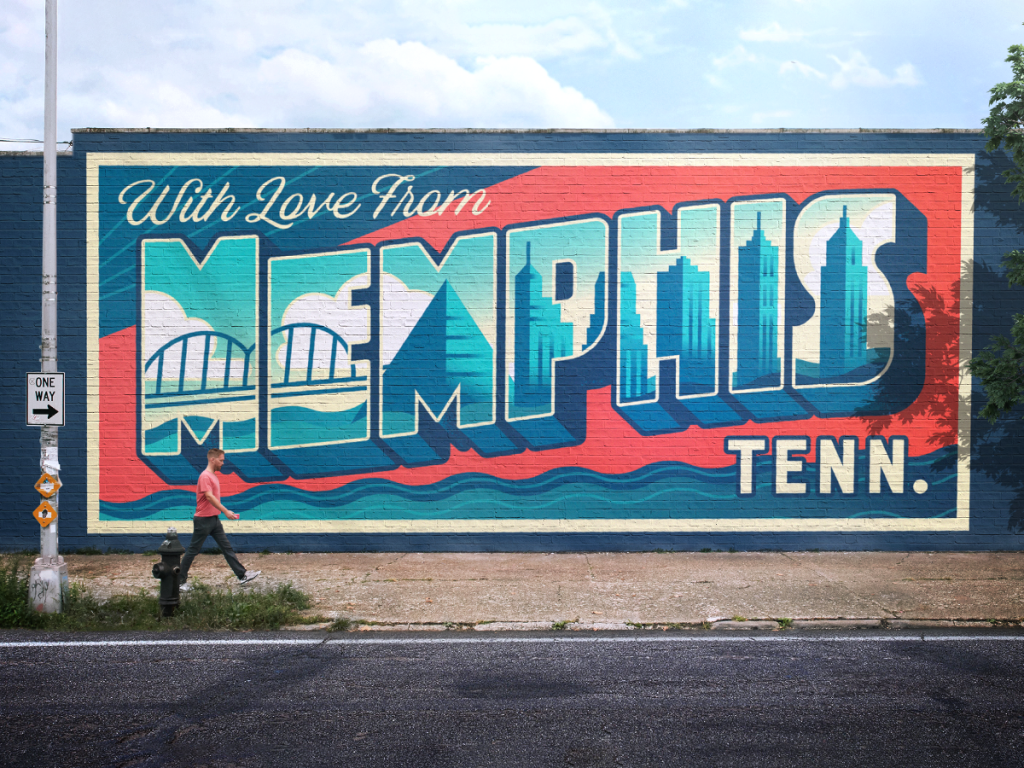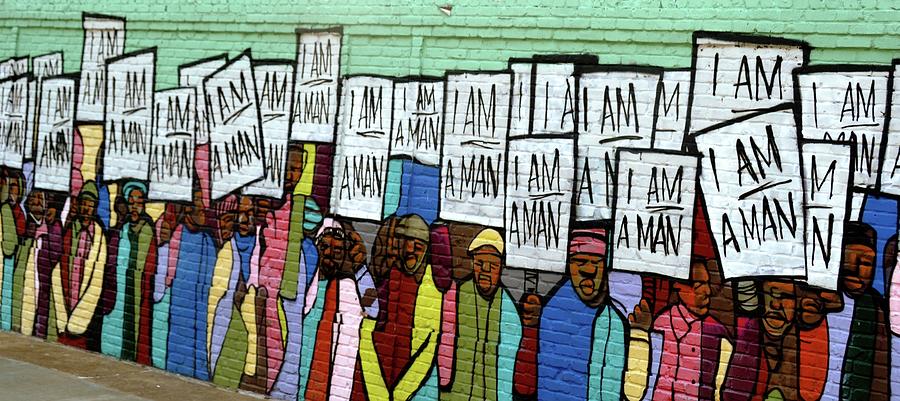
If you’ve ever visited Memphis you’ve likely wound up on Beale Street. Voted second only to Bourbon Street in New Orleans, Beale Street has been called everything from America’s most iconic street to the birthplace of the Blues. Today, you’ll find this historic street lined with bars, eateries, and unique novelty shops. Yet, in a city that is 63 percent Black, nearly 80 percent of those businesses are owned by white people. It begs the question: how can a town rooted in the Black experience progress into the future without erasing the foundation — the soul — upon which it is built?
Named after its sister city that sits along the Nile River in Egypt, Memphis means enduring and beautiful. Memphis is more than music. It’s more than lights, sounds, and world-class barbeque. At its heart, Memphis has always been about people, their connection to each other, and the city they love.
Memphis and the Movement
Historically, Memphis has been at the heart of change in this country. During the Civil Rights Movement, the city was where Black people came to entertain and be entertained. To shop, strategize and protest. When city sanitation workers decided to strike in response to deplorable job conditions, they marched down Beale Street joined by Dr. Martin Luther King Jr. Memphis would be the site of his last protest march, his last sermon, and his last breaths before he was assassinated at the Lorraine Motel.
The night before, Dr. King gave his “I’ve Been to the Mountaintop” sermon at the Mason Temple. At the beginning of the speech, Dr. King states, “Something is happening in Memphis; something is happening in our world.” More than fifty years later, something is still happening in Memphis and our world. Many of the same battles that were being waged in the 1960s remain in the 21st century.
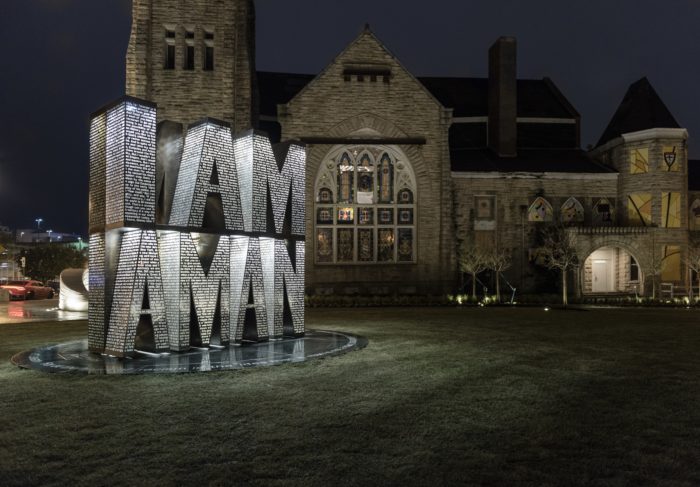
Memphis Blues
Memphis faces many glaring problems. Black Millenials 4 Flint (BM4F) Founder and CEO, SPARCC partner and Memphis native LaTricea Adams recently gave insight into the challenges the city is facing, specifically the legacy of redlining and racial disparities and their lingering effects on affordable housing and climate.
She noted that the once racially diverse and thriving communities in North Memphis including Frayser and Raleigh have recently seen significant divestment and adverse effects from extreme weather, leading to extreme poverty. Flooding in these areas has created environmental hazards including mold and contaminated dust that comes following the abatement of affected homes. Additionally, the Memphis heat index continues to rise creating an energy burden for homes that are in need of weatherization and upgraded air-conditioning.
Memphis, like many urban areas, is also seeing the rise of gentrification. Neighborhoods that for decades were plagued with harmful pollution are now booming with development. Long-time residents have been displaced and priced out of their newly redeveloped neighborhoods. Now, with the changing demographics, long-standing environmental issues that had long been ignored are now being addressed to appease the more affluent, whiter residents.
“The work is a living thing…”
Memphis, of all the cities SPARCC has been privileged to work with, encompasses both the need and opportunity that we hoped to address through this initiative. While there are many strengths and major opportunities for growth, there are also tremendous challenges in the areas of housing, climate and environmental justice, health, and many other historical issues that threaten to rip the soul out of the city.
Our SPARCC partner, The Center For Transforming Communities (CTC) in Memphis, is engaging in truly revolutionary work that will provide a sustainable blueprint for the city to move forward while remaining connected to the roots and culture of the city. CTC has simplified the process of community building (“what the people want”), community organizing (“getting people on the same page”), and community development (“doing something BIG”) by focusing on justice and safety, health and wellness, growth and education, and the arts. Most importantly, they are amplifying community voices and letting them tell their own stories.
Change has already begun in Memphis. SPARCC has been working with our Memphis partners to ensure that the investments made have lasting positive effects that provide all residents with access to economic, social, and health resources. This starts with applying our platform for Pathways to Prosperity by:
- Institutionalizing policy and practices that incorporate diverse racial, economic and cultural perspectives into community planning through the establishment of an equity assessment toolkit and regional equity council.
- Addressing gaps in the greenway trail connectivity and connecting with the public transportation system.
- Improving health outcomes for residents by enhancing the connectivity to healthy food, health services, access to green spaces and trails, and quality affordable housing.
- Improving the climate resilience of neighborhoods and the region through targeted home weatherization, repair, and improvement efforts.
SPARCC 1.0 — Making An Impact
During the first phase of SPARCC in Memphis, we set out to work with our partners to strategically target projects that could make the greatest impact. Some of the projects included:
The Table Spread
Midtown Mosque renovated a 3,750-square-foot building into a food distribution facility, a nursing clinic, and a non-profit retail greengrocer providing affordable fresh fruits and vegetables to the residents of the Klondike neighborhood. The funding was used to complete renovations for the Table Spread food pantry and greengrocer.
Bearwater Park Senior Housing Project
Grant funding was used to fill a gap in a 40-lot subdivision project. The development has received myriad public and private funding resources, which have been in progress for several years over multiple phases. The funds were targeted to complete the final three lots, which Oasis of Hope has reserved for low-income, disabled seniors.
The Heights Line
The Heights Line is a 1.75-mile multi-use path and linear park located in the median of National Street, a critical link in the transportation system in Memphis. The Heights Line is a neighborhood-led project to redesign National Street to be safer, more attractive, and more functional. Funds covered the costs of preconstruction documents, environmental impact study, and economic development impact study.
Tom Lee House
The rehab of a historic structure (To Lee House) into a museum and facility for community-based educational programming. Removal of blight and redevelopment of an adjacent 3.1-acre site into a Senior Independent Living Facility.
Home Improvement Program
The North Memphis Home Improvement program helios prevent displacement and reduce blight by providing vital home repairs. The full amount of these grants will be forgiven over five (5) years if the grant recipient continues to reside on the property.
SPARCC 2.0 — The Power of Connection
It became clear, entering into the second phase of SPARCC in Memphis that there needed to be greater conversation and connection with the community to determine their needs. It was important to not engage in some of the previous public and private investment practices that left marginalized communities disengaged and displaced. Additionally, these models limit innovation that often comes from the people in these communities.
The second phase of SPARCC in Memphis focused on restorative economics in an effort to make a more lasting impact in the community. The restorative economics organizing model comes from North Memphis V.O.I.C.E. — also known as Memphis Tilth — a SPARCC pilot project that worked collaboratively with CTC. CTC adapted this model into their Just C.H.A.N.G.E. (C = climate, H = health, A = arts & culture, N = next generation, G = growth, and E = education) model to address the specific challenges within the region. Additionally, SPARCC developed a Capital Toolkit to better support CDFI’s, providing greater flexibility with capital funds seeking to help absorb risk.
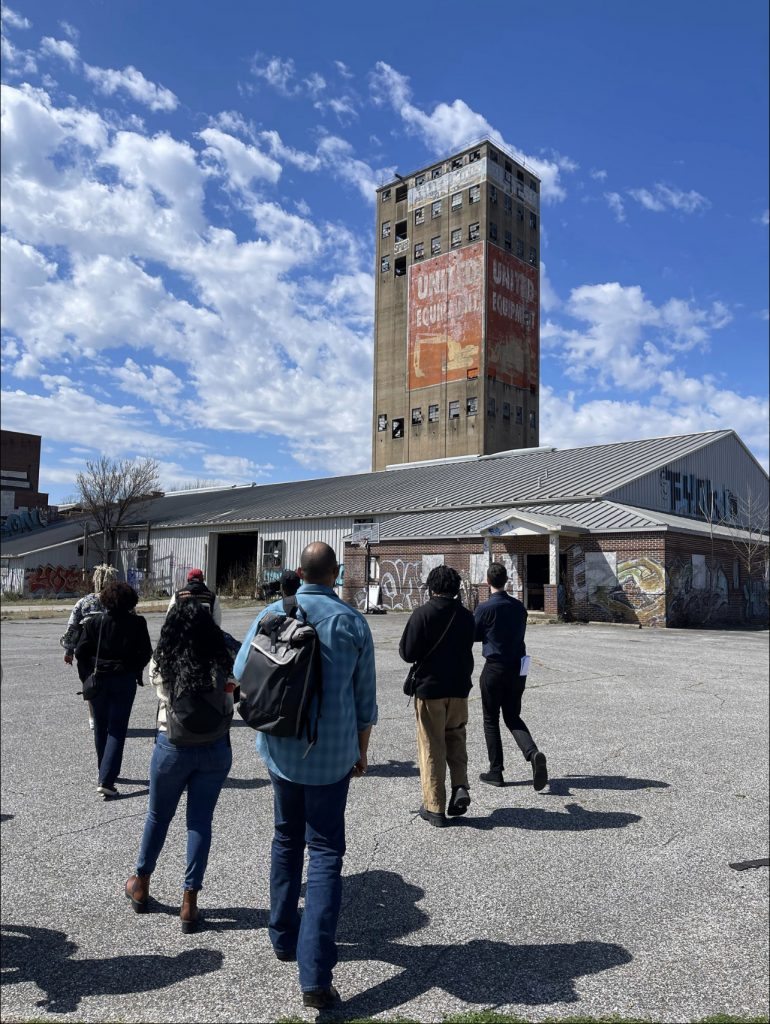
This project aimed to catalyze the transformation of the community’s environmental conditions and build neighborhood-level organizing infrastructure through SPARCC core grants. Specifically, the project sought to:
- Increase the amount of green and open spaces within the North Memphis V.O.I.C.E boundaries;
- Demonstrate the transformative nature of using strategic approaches to change blight influences into community assets, and;
- Adopt, clean, evaluate the soil health and activate at least one block from each of the 22 neighborhoods for community use.
This model brought an infusion of new energy and resources from the SPARCC capital team, newly acquired staff at CTC and local community partners who worked together to facilitate discussion, provide educational and technical resources, better understand community needs, advance support for worthwhile projects.
These same principles were used to support other projects including the Binghampton Land Trust to help stop gentrification in the neighborhood and the rehabilitation and repurposing of Carnes Elementary School with the Shelby County Schools.
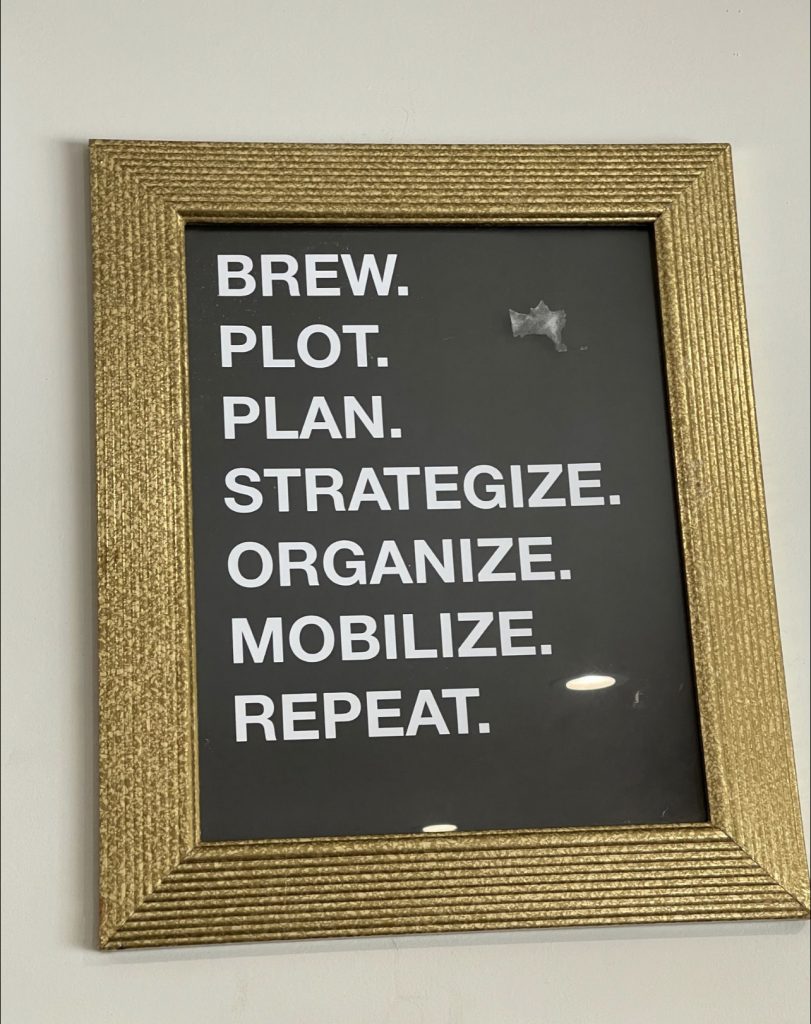
Do You Love My City, Like I Love My City?
Beyond the glam of Beale Street is the true heart of the city – the people. Their love for Memphis is endearingly fierce and resonates like a beautiful ballad. Systemic racism, classism, and economic greed have worked to tear apart this great community over the years, but the enduring spirit of this city could never be contained. Memphis shows us the power in connection. Working together, they have re-established their collective power by shifting the narrative of economic mobility, nurturing a strong connection to the arts and culture, and listening to and amplifying the true needs of the community. With joy and compassion, the people of Memphis continue to fight to protect what they’ve always been — unapologetically Black.
